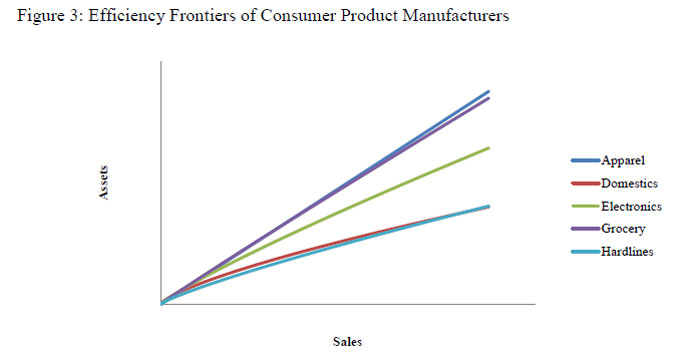From SCDigest's OnTarget e-Magazine
Feb. 2 , 2011
RFID and AIDC News: How can RFID Help the Soft Goods Supply Chain - Let Us Count the (60) Ways
New Research Report from University of Arkansas RFID Center Maps Processes and RFID Use Cases from Cutting to POS
SCDigest Editorial Staff
There is no question item-level tagging in the apparel industry (manufacturer to retailer and store floor) is hot, energized by a pretty clear value proposition and WalMart's announcement in mid-2010 that it was jumping into the fray. See Will WalMart get RFID Right this Time?
Now, more supporting evidence on the value prop side, as the University of Arkansas Information Technology Research Institute, which has done a number of research projects on RFID generally and lately specific to the apparel sector, has released a new report that identified 60 different applications for item and case level tagging from manufacturer to store floor.
SCDigest Says: |
 |
| The report suggests its work could be the foundation for use case development in a number of industries.. |
|
What Do You Say?
|
|
|
|
The research was supported by funding from GS1, the retail industry trade group behind the EPC tag and standards, and the American Apparel and Footwear Association (AAFA). The research and report were produced by Matthew Waller, David Cromhout and Justin Patton of the RFID Research Center, a sub-group of the Information Technology Research Institute, and Brent Williams and Bill Hardgrave of Auburn University. Hardgrave use to lead the RFID Research Center until moving to Auburn last year.
The new report is actually part 1 of the three-phased research mission focused on "supplier ROI" from RFID. , noting that "most item-level RFID apparel research has focused on the potential benefits for apparel retailers, with little attention to the likely benefits of item-level RFID tagging for apparel manufacturers."
This first report focuses on "use cases." Phase II will involve the measurement of ROI for select use cases identified in Phase I. Phase III will study the effect of RFID on multiple suppliers simultaneously through an experiment.
The use cases were compiled by members of the research team by calls and visits with a wide range of companies, in several different countries, in many different types of facilities, and "thus reveal where the industry collectively believes the greatest RFID benefits reside," the report says.
Perhaps getting a little ahead of itself versus part II of the research, the report says that "The findings of Phase I show that the potential benefits of item-level RFID in the apparel supply chain reach beyond the retailer and include apparel manufacturers. To begin, improved backroom-to-shelf replenishment and greater perpetual inventory (PI) accuracy, which result from RFID are shown to offer manufacturers the opportunity to increase top-line sales, due to higher product availability at the retail shelf."
The report notes a number of potential supply chain benefits to manufacturers, such as:
• Reduce labor costs from fewer "touches" and no need for manual bar code scanning
• Reduced retail chargebacks from more accurate shipping
• Reduced inventory through better accuracy and visibility, and, interestingly, an observation that RFID could reduce total ordering costs (shipping and receiving process efficiency) and therefore result in smaller order quantities because the ordering cost component of Economic Order Quantity (EOQ) would be released, reducing the math pushing towards larger, fewer orders. SCDigest is not sure - yet - that this holds up in practice, but is an interesting theory.
• Reduce inventory lost to shrinkage and obsolescence
The report notes that several soft goods retailers have piloted RFID programs and achieved substantial successes (e.g., Bloomingdale’s, Dillard’s, JCPenney), while American Apparel and WalMart are in the midst of implementing its widespread item-level tagging. (There are also a number of unmentioned successes coming out of Europe).
It also observes that RFID tags on apparel generally show very high reads rates, reducing an implementation barrier sometimes found for other product supply chains.
Interestingly, the researchers tried to measure the "asset efficiency" among a number of consumer related industries, meaning the level of total asset investment needed to reach a given level of sales. Based on public company data, that research showed the apparel sector basically tied with the grocery products industry among the sectors studied as having the worst asset efficiency, as shown in the graphic below. That means, they say, that "in general, apparel manufacturers require the highest level of assets to generate sales, compared with other groups of consumer product manufacturers. Thus, they also offer the greatest relative opportunity to improve business processes through the use of RFID."

Source: University of Arkansas Information Technology Research Institute
(RFID and AIDC Story Continued Below)
|